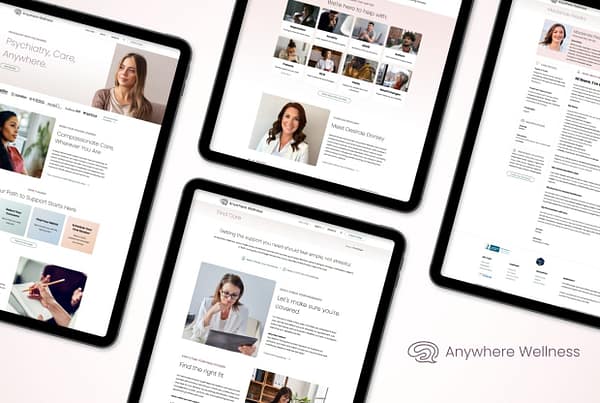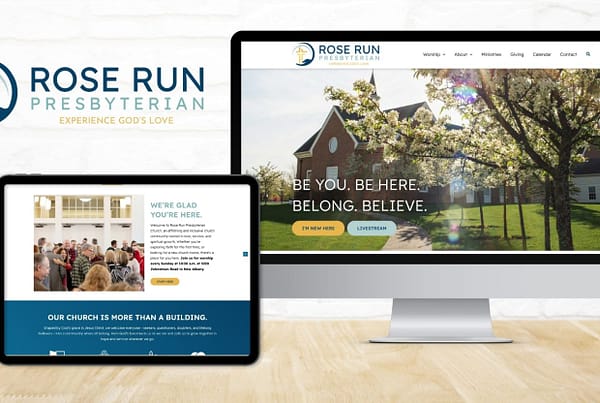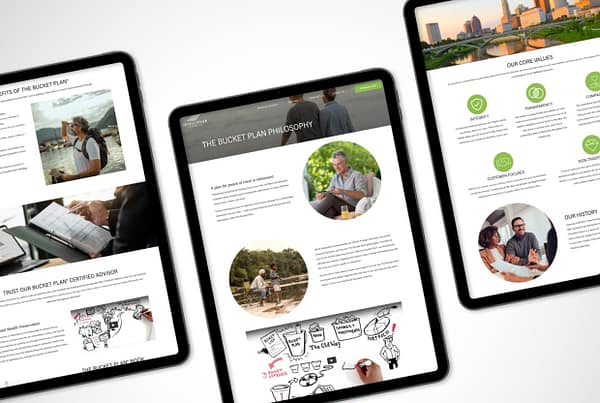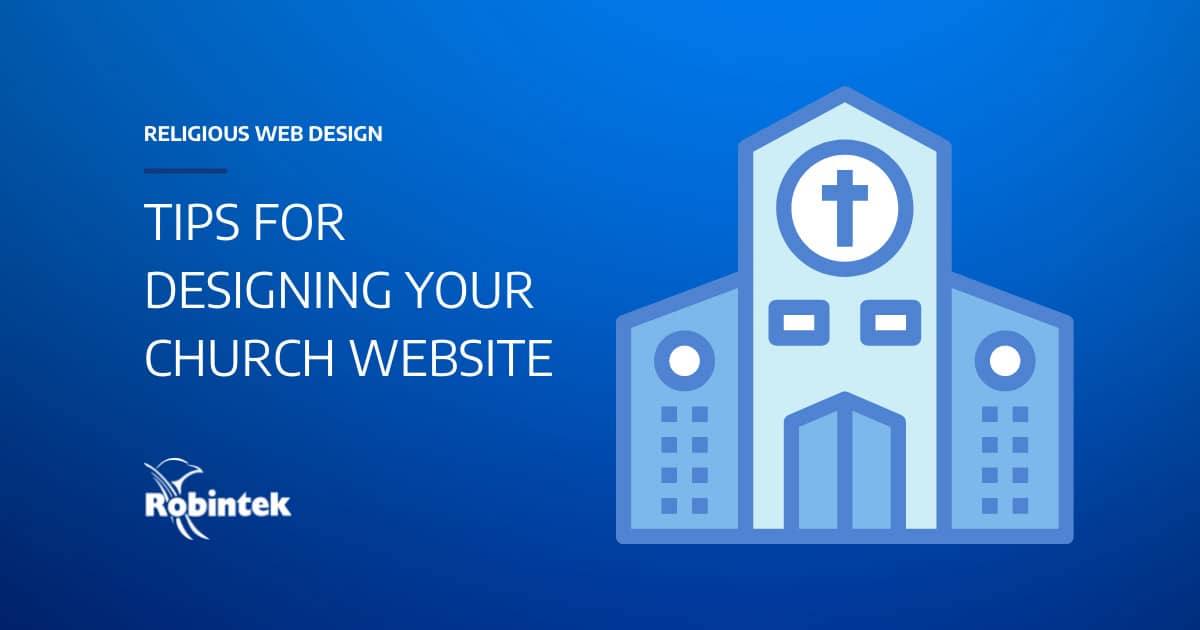
In today’s digital world, your website is often the first impression new visitors have of your church. If your church or religious website is outdated, unoriginal, or doesn’t exist, you could be losing potential new members. It also makes it difficult for your current members to find the information they need.
In many ways, religious web design follows the same principles as all web design. But there are certain elements you can focus on to make your church’s website stand out.
Whether you have an existing site that needs updating, or you’re starting from scratch, here are some tips to help you make the most out of your church website.
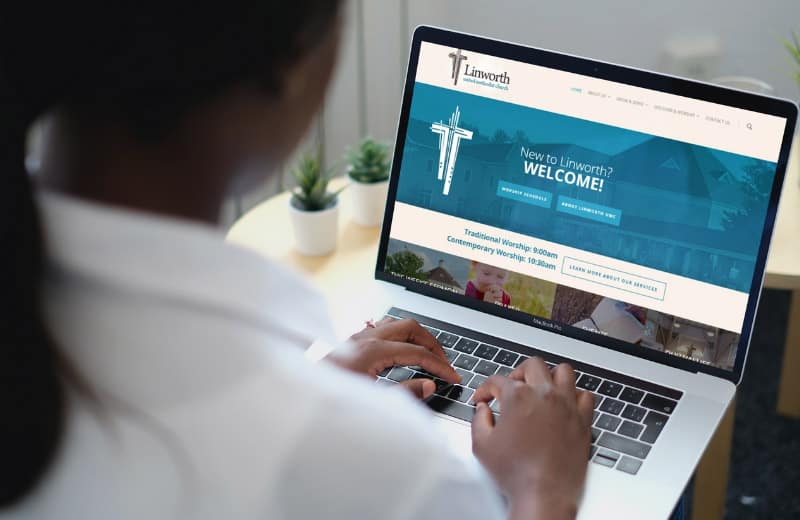
1. Prioritize user experience
Focusing on a good user experience helps to ensure that your visitors not only find your church’s website but stay there. Without it, visitors may become frustrated and abandon your website.
Keep your design simple and streamlined to provide the best user experience. Your website should have clear navigation, including a search function, so visitors can quickly find what they’re looking for.
Each page on your site should focus on one topic. Also, it should be formatted with a simple structure using headlines and bullet points to emphasize the most important information. Large blocks of text can be broken up with graphics, images, or video.
2. Provide engaging content
Your website’s content should be engaging and informative. Your website is often the first place a new or potential member will come to learn about your church. So it’s essential that you provide them with all the information they need to know about you. This can include a detailed About Us page, a Contact Us page with Google Maps built-in, and other informative pages.
You should also keep your site updated regularly with new, recurring content so your visitors stay engaged. This could take the form of a blog, a news feed, or your church’s weekly bulletin and sermons.
Audio and video content are usually more memorable and more effective than text. Try to incorporate them wherever you can.
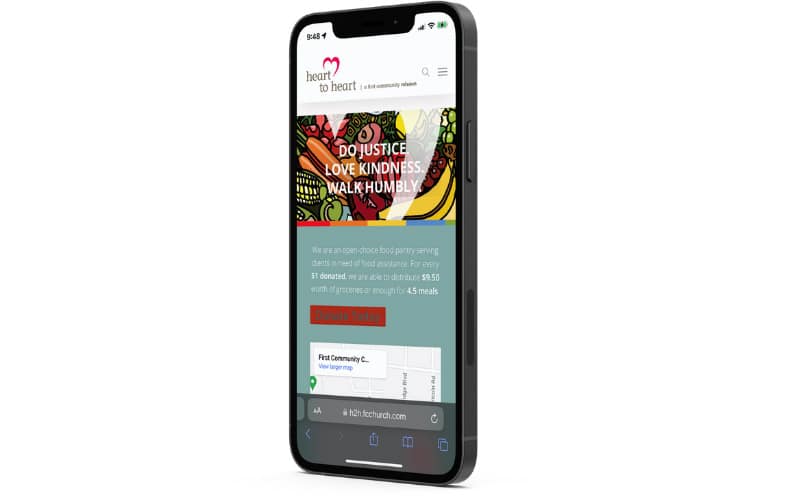
3. Ensure your site is mobile-responsive
With more than 60% of all online traffic now coming from mobile, it’s crucial that your church or religious website displays properly on all devices. Visitors on the go want to be able to access your site from their phones to find what they need quickly.
If your site is broken, disorganized, or unappealing on mobile, you could be missing out on a huge chunk of traffic. Designing your website with a mobile-responsive layout ensures that your site looks great, no matter what device is being used.
4. Include calls-to-action
Well-placed calls-to-action (CTAs) throughout your website guide users to take a specific action. Strategic CTAs can also direct your visitors to different, relevant pages, so they spend more time on your site.
You should try to include a CTA on most of the pages on your website. This will help you convert your visitors into members of your congregation and keep your current members involved.
This might be a “Learn More” button on your homepage linking to detailed information about your upcoming events. It could also be a “Sign Up” button inviting visitors to sign up for your weekly newsletter, or a “Contact Us” button linking to a simple contact form.

5. Incorporate real photos of your church
Real photos help tell the story of who you are and what your church is about. Your visitors don’t want to see tons of stock photos – they want to see actual images of your church and members of your congregation to get to know you.
Add high-quality photos of your church, membership, staff, or events throughout your site. This allows potential new members to get a sense of your church’s culture and whether it is the right fit for them. Professional photos can be incorporated into your website’s design to capture your visitor’s attention and reflect your church’s personality.
6. Optimize your site for local search
Search engine optimization (SEO) is essential for ranking on Google and driving more organic web traffic to your site. But local SEO is especially important for church or religious websites so members of your local community can find you online.
There are many factors that affect your local SEO. Start by ensuring your business listing information on Google and other online directories is accurate and up to date. Use target keywords in your content that include your city, state, or other location information. You may also want to enlist an SEO professional to audit your site and make recommendations.
Need help with your church’s web design?
In addition to this list of tips, there are plenty of free online resources to help you design a DIY website. But we know that often, churches and other religious organizations don’t have the time or resources to commit long hours to their website design.
That’s where we come in. Robintek has more than 20 years of experience designing websites for churches and other religious organizations. View our religious and church design portfolio to see our work in action, or request a consultation to learn about what Robintek can do for you.
Who We Are
We are Robintek, a Columbus, Ohio web design and web development agency. In addition to our work with church and religious organizations, we have partnered with a wide variety of industries to help them establish a strong online presence. From construction to healthcare to small businesses, Robintek can help you build your website and your brand with marketing, SEO, logo design, content creation, photography, and other services.
For more than 20 years, we have been serving over 600 customers across the nation. We have worked extensively with clients all over our home state of Ohio, in Columbus, Akron, Westerville, Lima, Wooster, Youngstown, and more. Interested in learning about what Robintek can do for your company? Reach out to us today.

